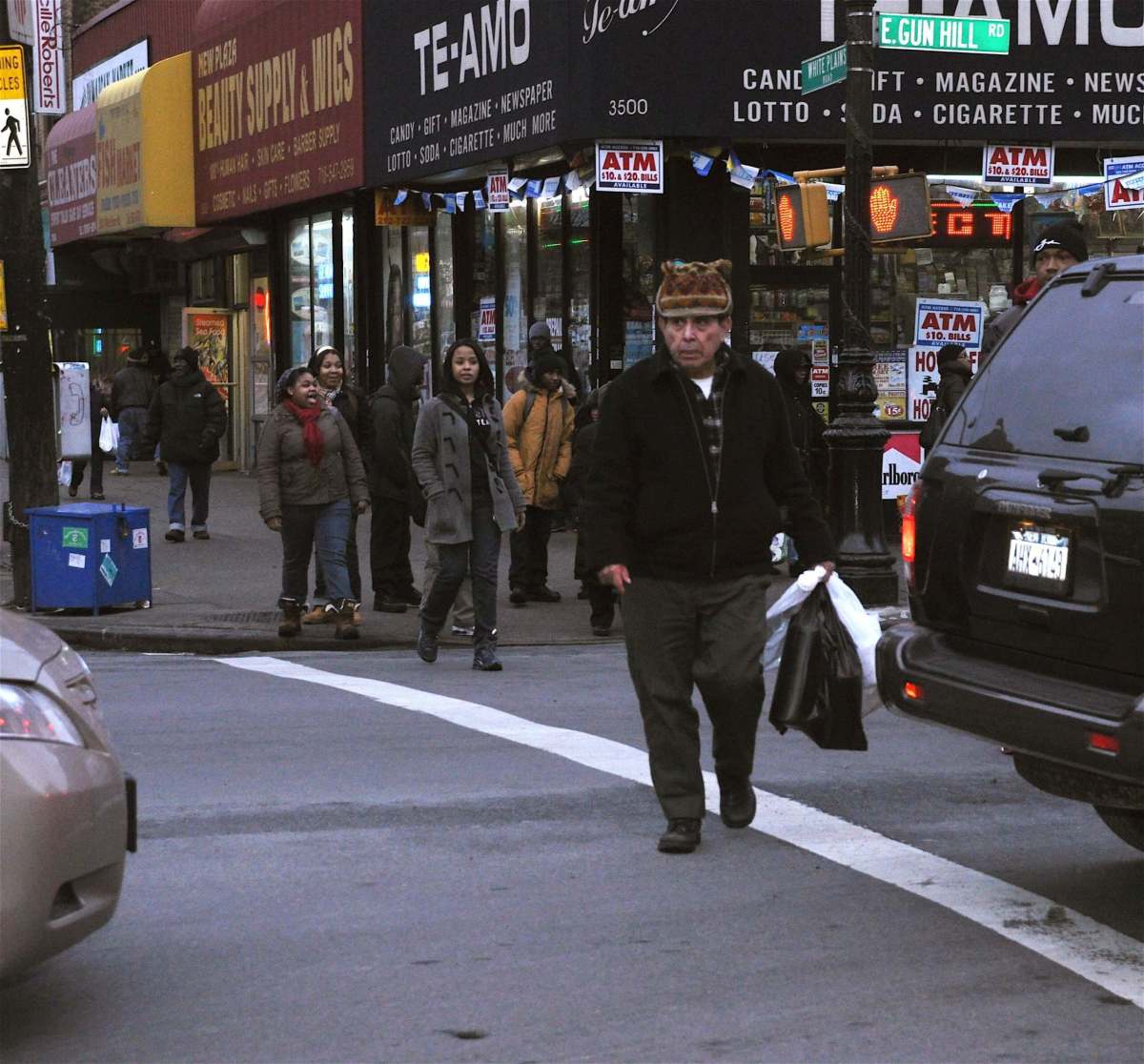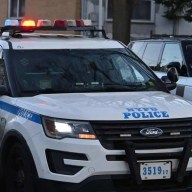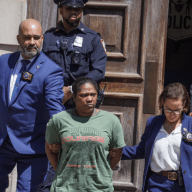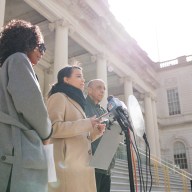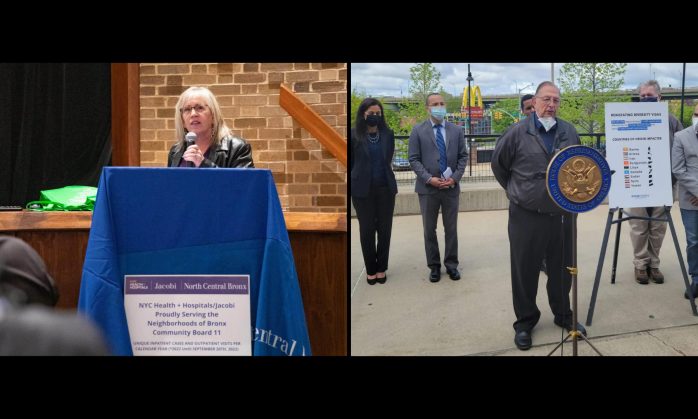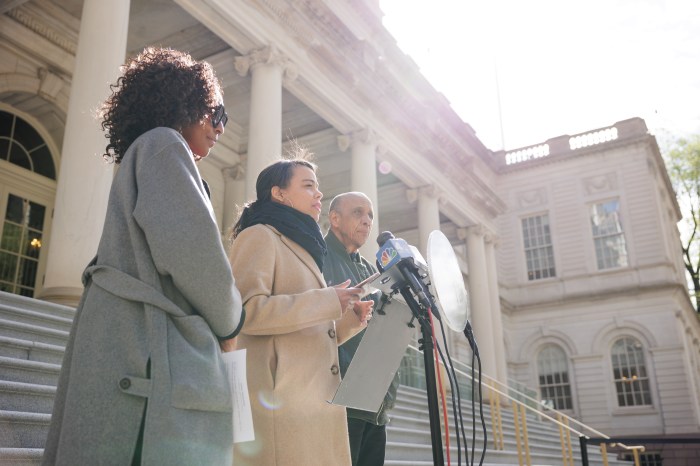A report released by the Tri-State Transportation Campaign on Wednesday, January 6 confirmed what most Bronx residents already know: E. Gun Hill Road, the Grand Concourse and Broadway are deadly thoroughfares for pedestrians.
There were five pedestrians killed on E. Gun Hill Road between 2006 and 2008, five killed on the Grand Concourse and four on Broadway, the report found. There were 57 pedestrians killed in the Bronx between 2006 and 2008.
The Tri-State Transportation Campaign, a Manhattan-based non-profit, praised safety efforts executed by the New York City Transportation but blasted the state Department of Transportation.
The state spends less than half as much federal money on New York City pedestrians than states spend on city pedestrians nationwide, Veronica Vanterpool of the Tri-State Transportation Campaign said.
Businesses, apartment buildings, schools, senior centers, buses, trains and Montefiore Medical Center’s North Division spit hordes of pedestrians onto E. Gun Hill Road, Vanterpool explained. The Grand Concourse is wide and can be a nightmare to cross on foot. Only 39 percent of Bronx residents own cars, so many walk to destinations and/or public transit, Vanterpool said.
E. Gun Hill Road is dangerous in part because trucks load and unload at businesses on the congested thoroughfare, Community Board 11 member Vinny Prezioso said. Several important streets intersect E. Gun Hill Road: Boston Road, Bronxwood Avenue, White Plains Road and Eastchester Road. Motorists speed down E. Gun Hill Road, whereas pedestrians often attempt to cross early, Prezioso said. Perhaps the city should extend E. Gun Hill Road curbs and medians or install a speed hump, he added.
The Grand Concourse has been treacherous for decades, longtime resident Beverly Beja remarked.
“Not only seniors but people of all ages are terrified to cross the Grand Concourse,” Beja said.
But conditions have improved, she admitted. Some years ago, the city extended Grand Concourse curbs and medians between E. 161 and E. 170th streets and installed concrete planters to narrow the thoroughfare.
“It made a big difference,” Beja said. “There are fewer accidents today.”
Beja hopes the city enacts similar changes on the Grand Concourse near Bronx Lebanon Hospital, north of E. 170th Street, she said.
The city installed bike lanes on the Grand Concourse in 2008. Bike lanes are good for pedestrian safety; they cause motorists to slow down, Vanterpool explained. E. Gun Hill Road belongs to a DOT pilot program designed to test pedestrian countdown signals, which have been installed at seven intersections on the thoroughfare. It has also been identified as a “congested corridor” and is scheduled for a safety overhaul.
The DOT’s Safe Routes to Schools program includes more than 20 schools in the Bronx; wider sidewalks and better road markers have been added. The DOT has also lengthened cross times at some intersections. Five neighborhoods in the borough have been targeted for senior pedestrian safety changes – two on the Grand Concourse.
“Traffic fatalities are at the lowest levels in the city’s history,” DOT spokesman Monty Dean said. “But we remain vigilant.”
The Tri-State Transportation Campaign report didn’t incorporate data from 2009, which witnessed several high-profile pedestrian deaths in the Bronx. In July, Miguel Colon, 37, pushed his son to safety but was hit and killed on E. Gun Hill Road at Knapp Street. In October, a police detective allegedly struck and killed 67-year old Drana Nikac on Broadway near W. 232nd Street. In November, an unknown motorist mowed down 28-year old Yvette Diaz on the Grand Concourse at E. 165th Street.
Reach reporter Daniel Beekman at 718 742-3383 or dbeekman@cnglocal.com

